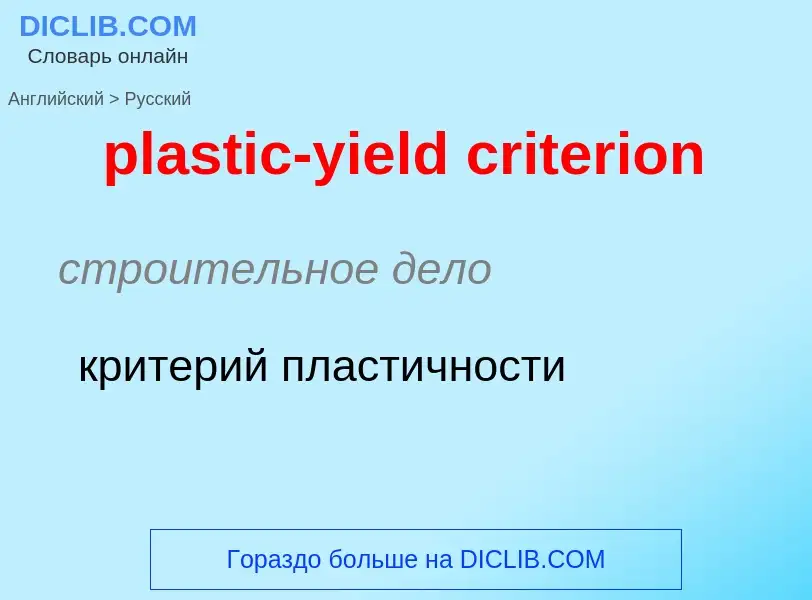Translation and analysis of words by ChatGPT artificial intelligence
On this page you can get a detailed analysis of a word or phrase, produced by the best artificial intelligence technology to date:
- how the word is used
- frequency of use
- it is used more often in oral or written speech
- word translation options
- usage examples (several phrases with translation)
- etymology
plastic-yield criterion - translation to russian
строительное дело
критерий пластичности
Definition
Wikipedia
A yield surface is a five-dimensional surface in the six-dimensional space of stresses. The yield surface is usually convex and the state of stress of inside the yield surface is elastic. When the stress state lies on the surface the material is said to have reached its yield point and the material is said to have become plastic. Further deformation of the material causes the stress state to remain on the yield surface, even though the shape and size of the surface may change as the plastic deformation evolves. This is because stress states that lie outside the yield surface are non-permissible in rate-independent plasticity, though not in some models of viscoplasticity.
The yield surface is usually expressed in terms of (and visualized in) a three-dimensional principal stress space (), a two- or three-dimensional space spanned by stress invariants () or a version of the three-dimensional Haigh–Westergaard stress space. Thus we may write the equation of the yield surface (that is, the yield function) in the forms:
- where are the principal stresses.
- where is the first principal invariant of the Cauchy stress and are the second and third principal invariants of the deviatoric part of the Cauchy stress.
- where are scaled versions of and and is a function of .
- where are scaled versions of and , and is the stress angle or Lode angle


